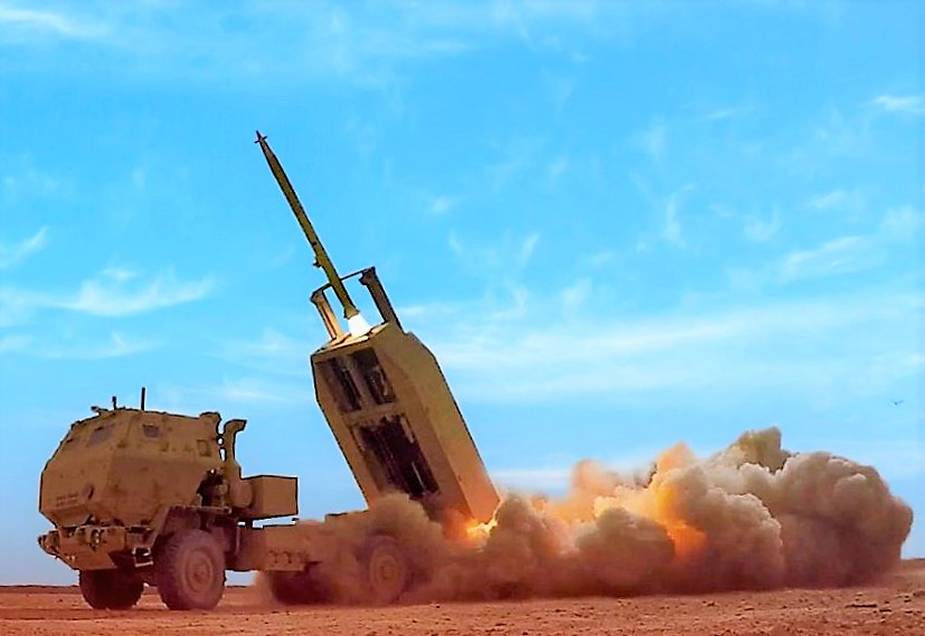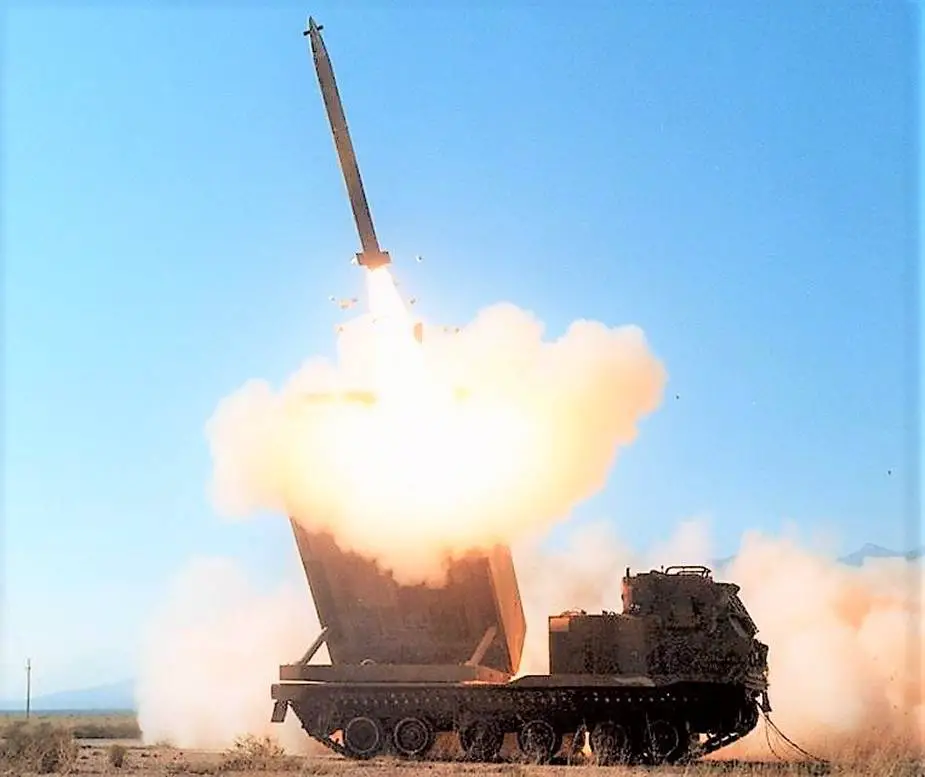Breaking news
Lockheed Martin awarded US Army contract to replenish stock of GMLRS rockets provided to Ukraine.
The U.S. Army awarded multiple contract options worth $520.814 million on Oct. 21 and Nov. 2, 2022, to Lockheed Martin for Guided Multiple Launch Rocket Systems in order to replenish GMLRS provided from DoD inventory to Ukraine.
Follow Army Recognition on Google News at this link

GMLRS missile launched from M142 HIMARS (Picture source: Lockheed Martin)
"These awards demonstrate the significant impact GMLRS are having on the battlefield as a vital combat capability for our international partners”, U.S. Under Secretary of Defense for Acquisition and Sustainment William A. LaPlante said. “They are great examples of contracting approaches we are using to more rapidly accelerate award timelines and ultimately deliver capability.”
The GMLRS procurement is part of the Ukraine Supplemental appropriation.
“This award enables us to replenish our own inventory while providing critical capabilities for our allies and international partners,” said Douglas R. Bush, the Army's Assistant Secretary for Acquisition, Logistics and Technology. “We remain committed to getting things on contract as quickly as possible to ensure our stocks are rapidly replenished.”
This effort was led by the Army's Program Executive Office for Missiles and Space, in partnership with components across the DoD.
Guided Multiple Launch Rocket System (GMLRS) rockets have an extended range and add GPS-aided guidance to their inertial navigation system. Flight control is accomplished by four forward-mounted canards driven by electromechanical actuators. GMLRS rockets were introduced in 2005 and can be fired from the M270A1 and M270A2, the European M270A1 variants (British Army M270B1, German Army MARS II, French Army Lance Roquette Unitaire (LRU), Italian Army MLRS Improved (MLRS-I), Finnish Army M270D1), and the lighter M142. M30 and M31 rockets are, except for their warheads, identical.[53] By December 2021, 50,000 GMLRS rockets had been produced,[54] with yearly production then exceeding 9,000 rockets. Each rocket pod contains 6 identical rockets.
So, the MLRS Family of Munitions (MFOM) includes a variety of precision-strike rockets and missiles, with ongoing evolutionary developments. These combat-proven rounds greatly reduce collateral damage.
Guided MLRS Specifics:
* Persistent, responsive, all-weather, rapidly-deployable, long-range, surface-to-surface, precision-strike capability
* Fired from both the MLRS M270 family of launchers and the High Mobility Artillery Rocket System (HIMARS) launchers
* 6 Guided MLRS rockets per launch pod, with 2 pods carried by the M270 launchers and 1 pod carried by the HIMARS launchers
* More than 40,000 Guided MLRS rockets produced to date and climbing.
* Guided MLRS rockets have a reliability rating exceeding 98 percent.
Current Guided MLRS variants include:
Guided MLRS Unitary: The combat-proven Guided MLRS Unitary round integrates a 200-pound unitary warhead, providing precision strike for point targets. The Unitary variant has a range exceeding 70 kilometers.
Guided MLRS Alternative Warhead (AW): The Guided MLRS AW round was the first munition developed to service area targets without the effects of unexploded ordnance, complying with the U.S. Department of Defense cluster munitions policy and international policies. The AW variant has a range exceeding 70 kilometers and delivers a 200-pound class fragmenting warhead.
Extended-Range (ER) Guided MLRS: A new developmental variation of the Guided MLRS family, ER GMLRS offers an extended range out to 150 kilometers in all weather conditions.
ER GMLRS shares significant commonality with legacy Guided MLRS, and is deployable by HIMARS and the MLRS M270 family of launchers. The rounds incorporate a larger motor and have enhanced maneuverability due to tail-driven control.

GMLRS missile launched from M142 HIMARS (Picture source: Lockheed Martin)


























